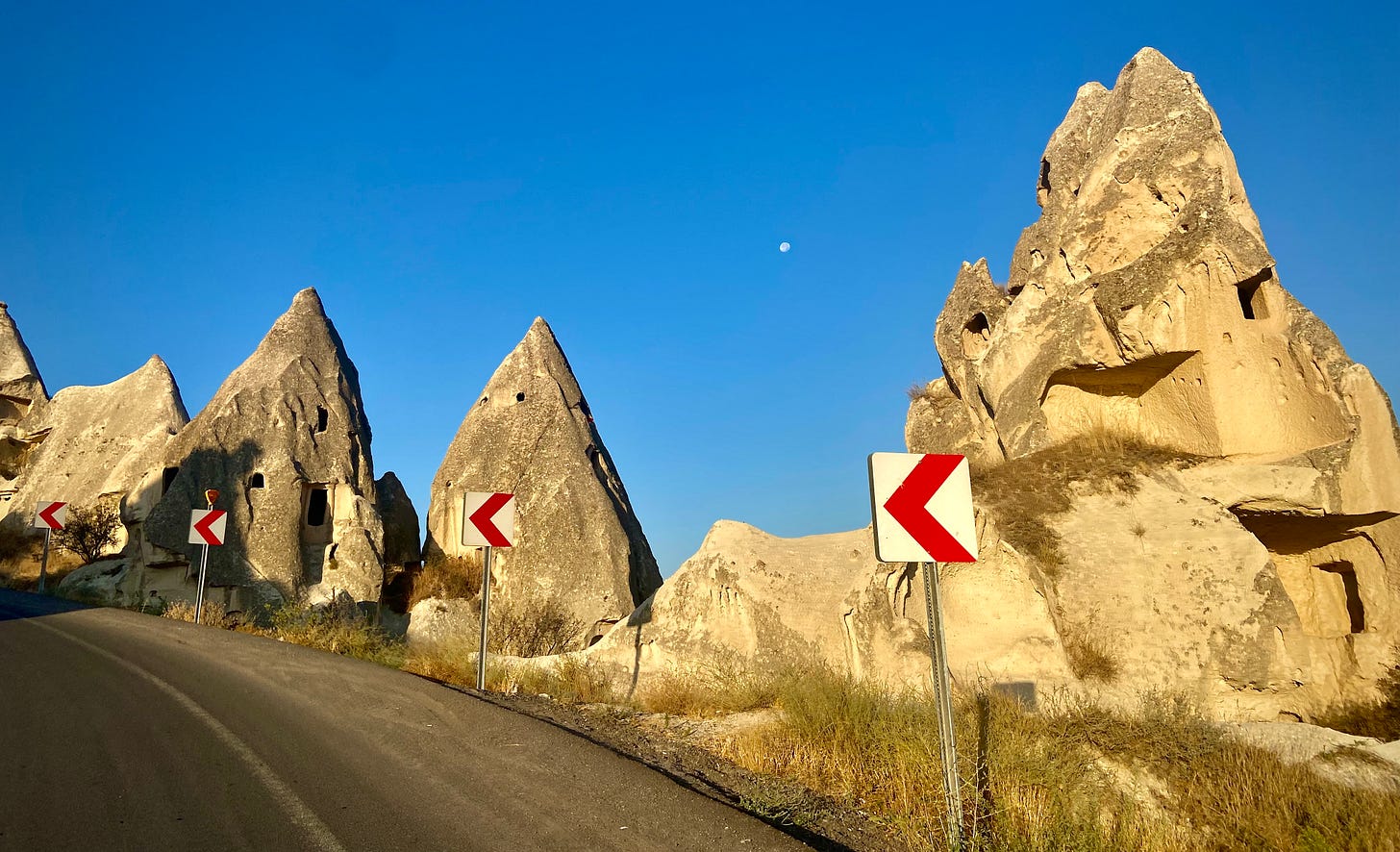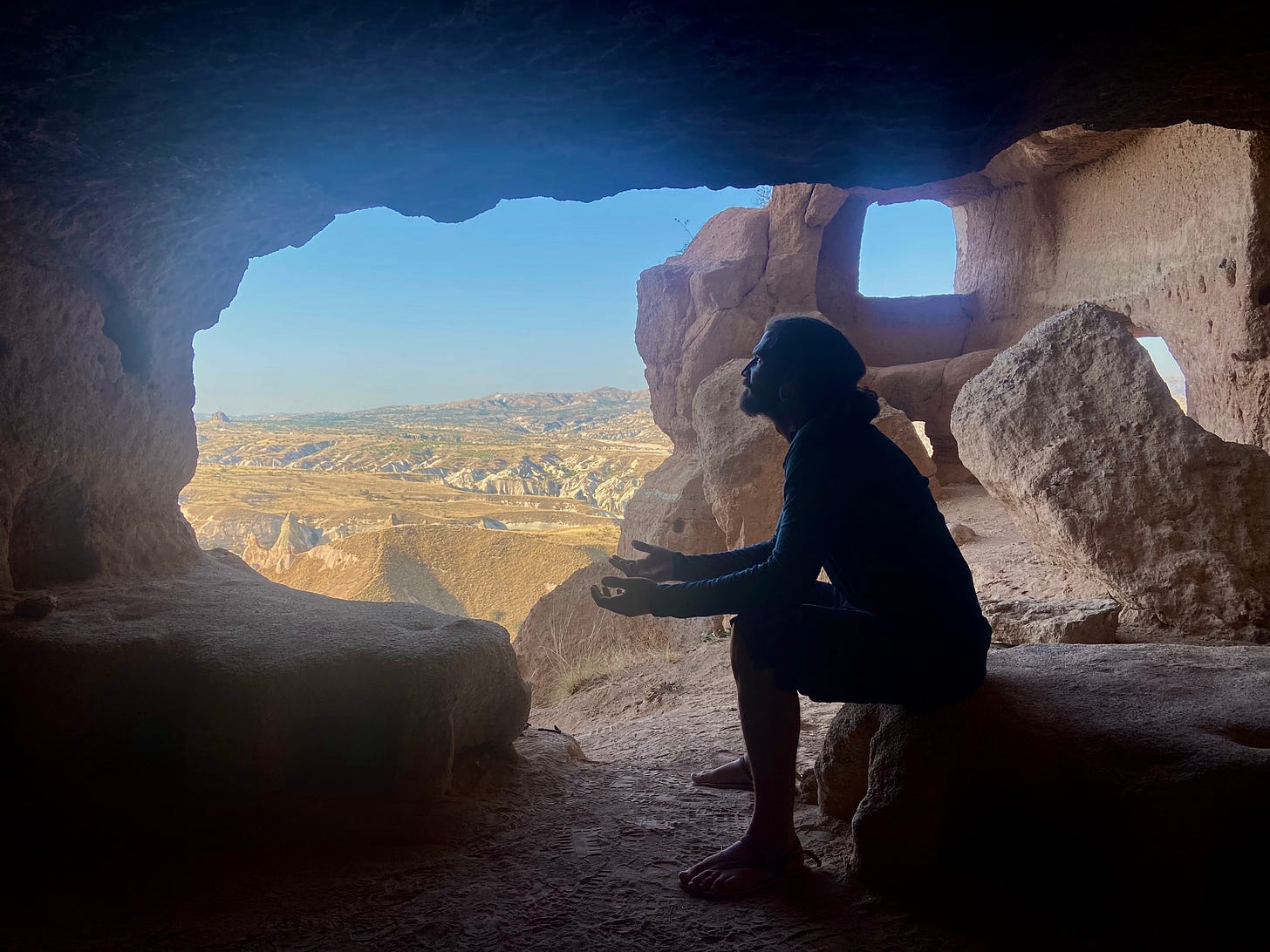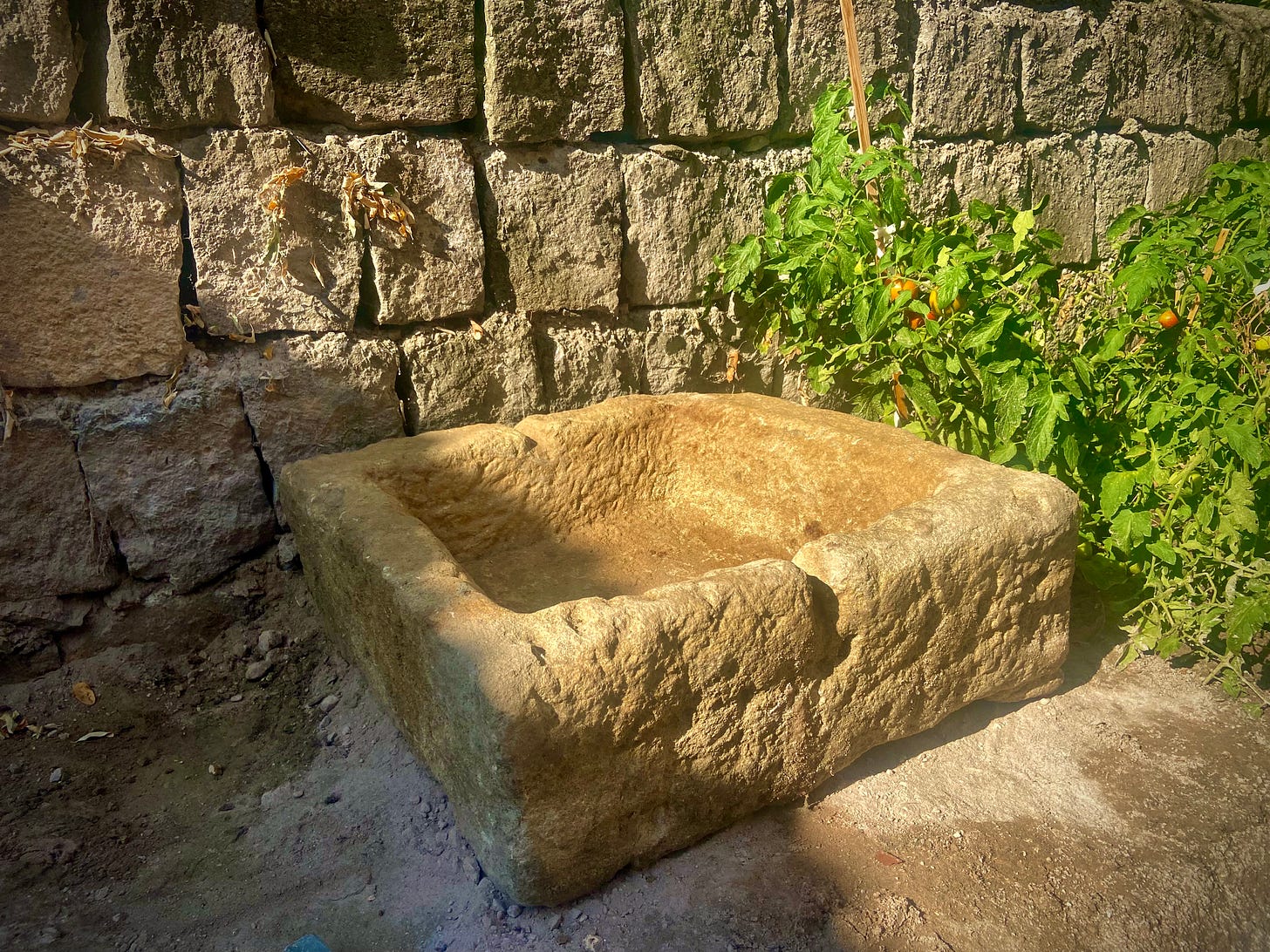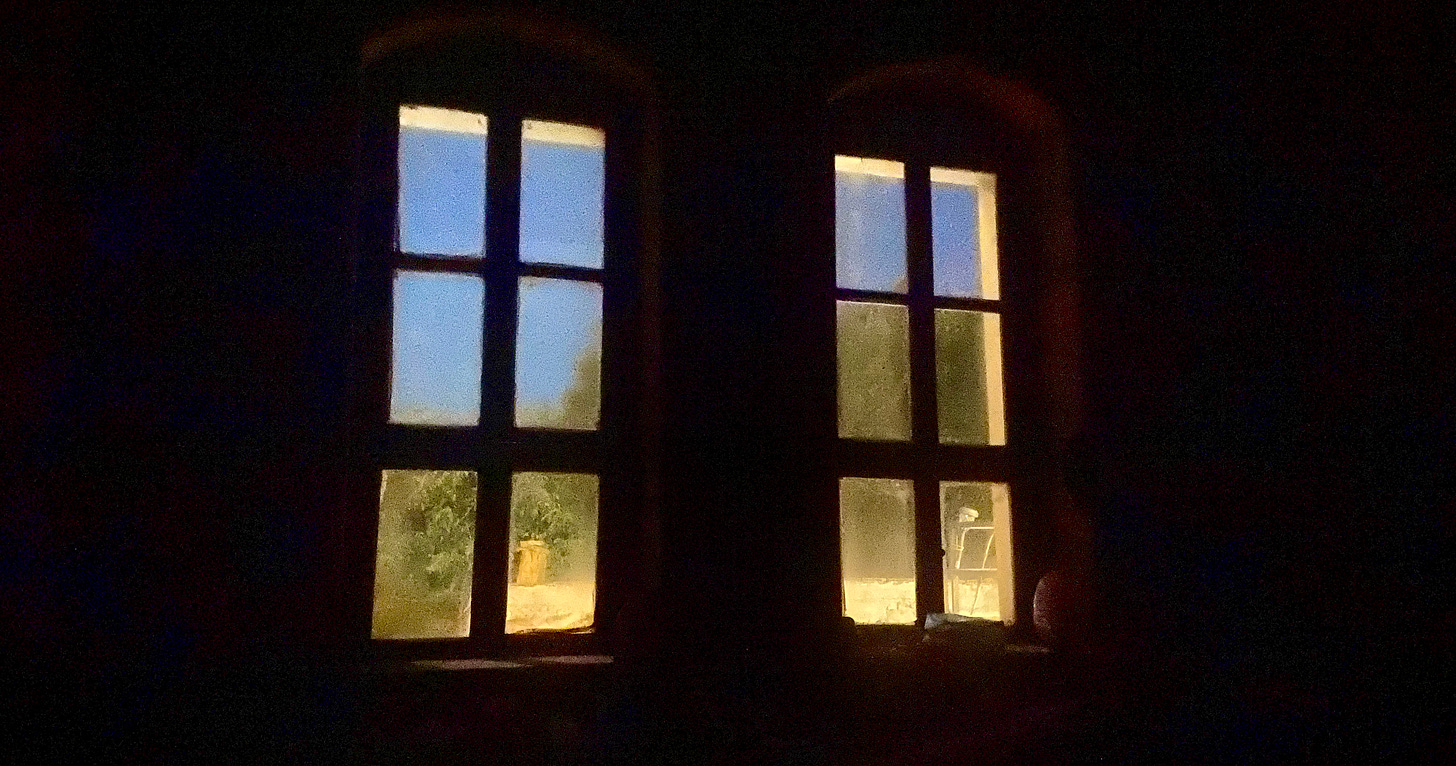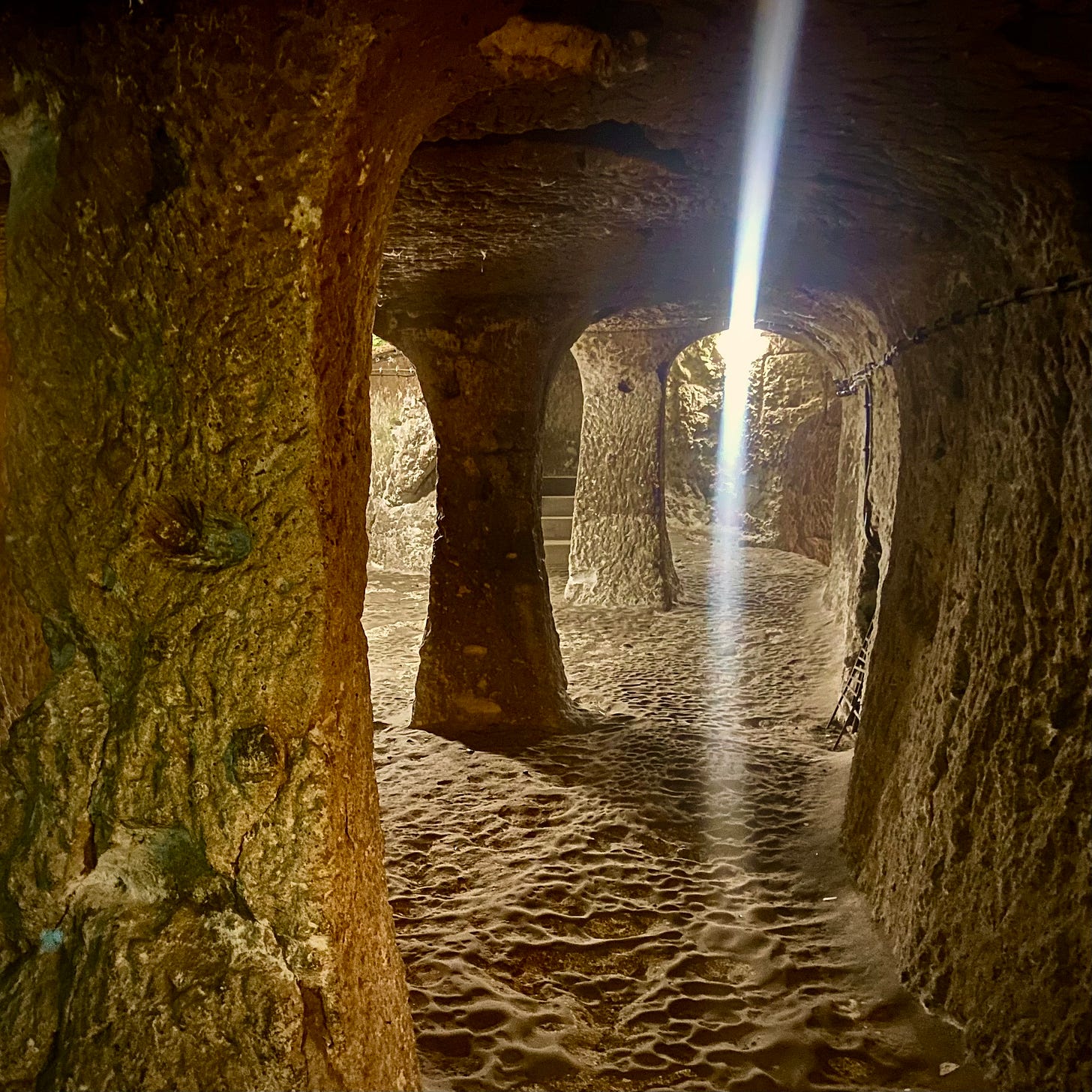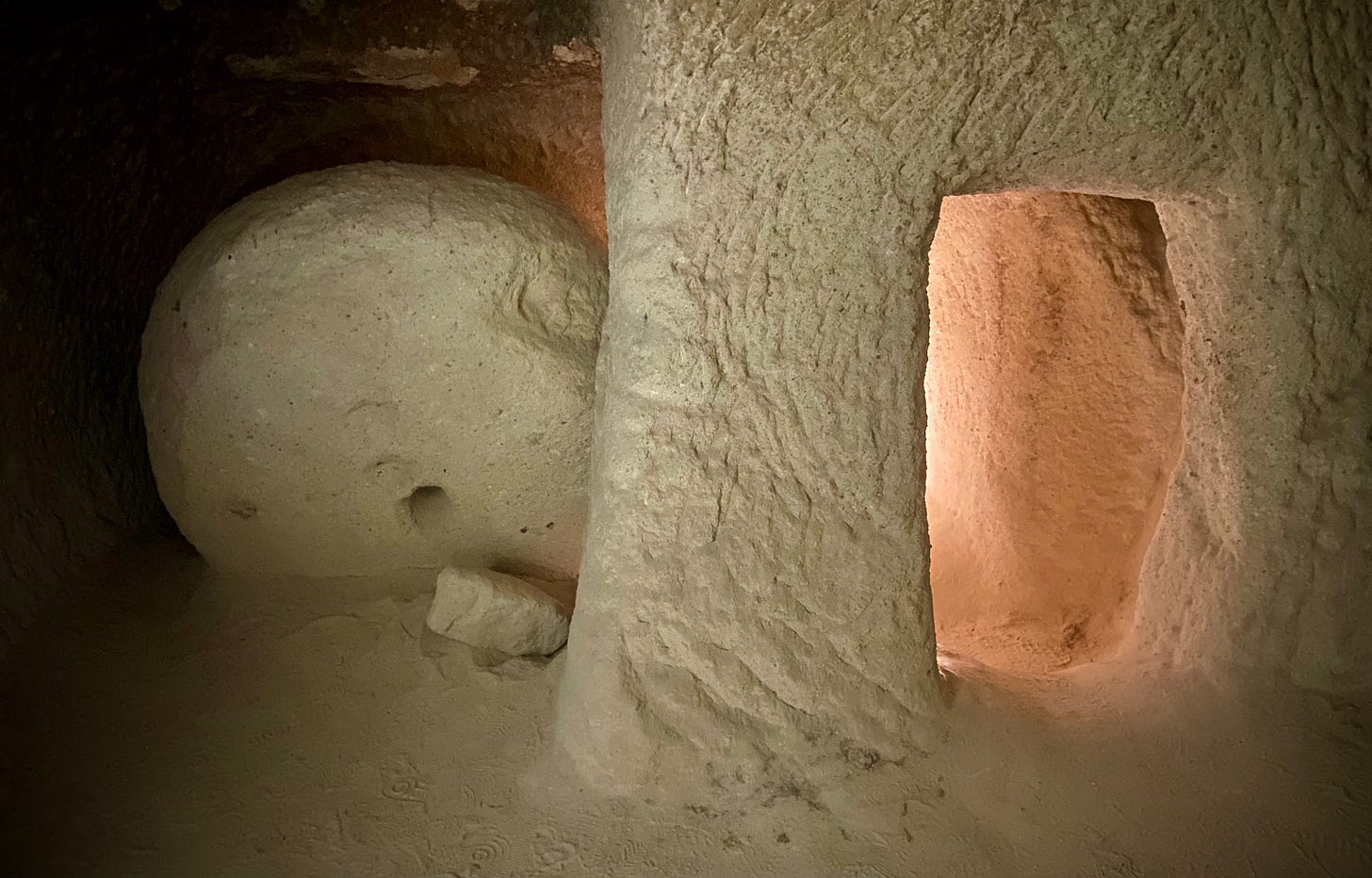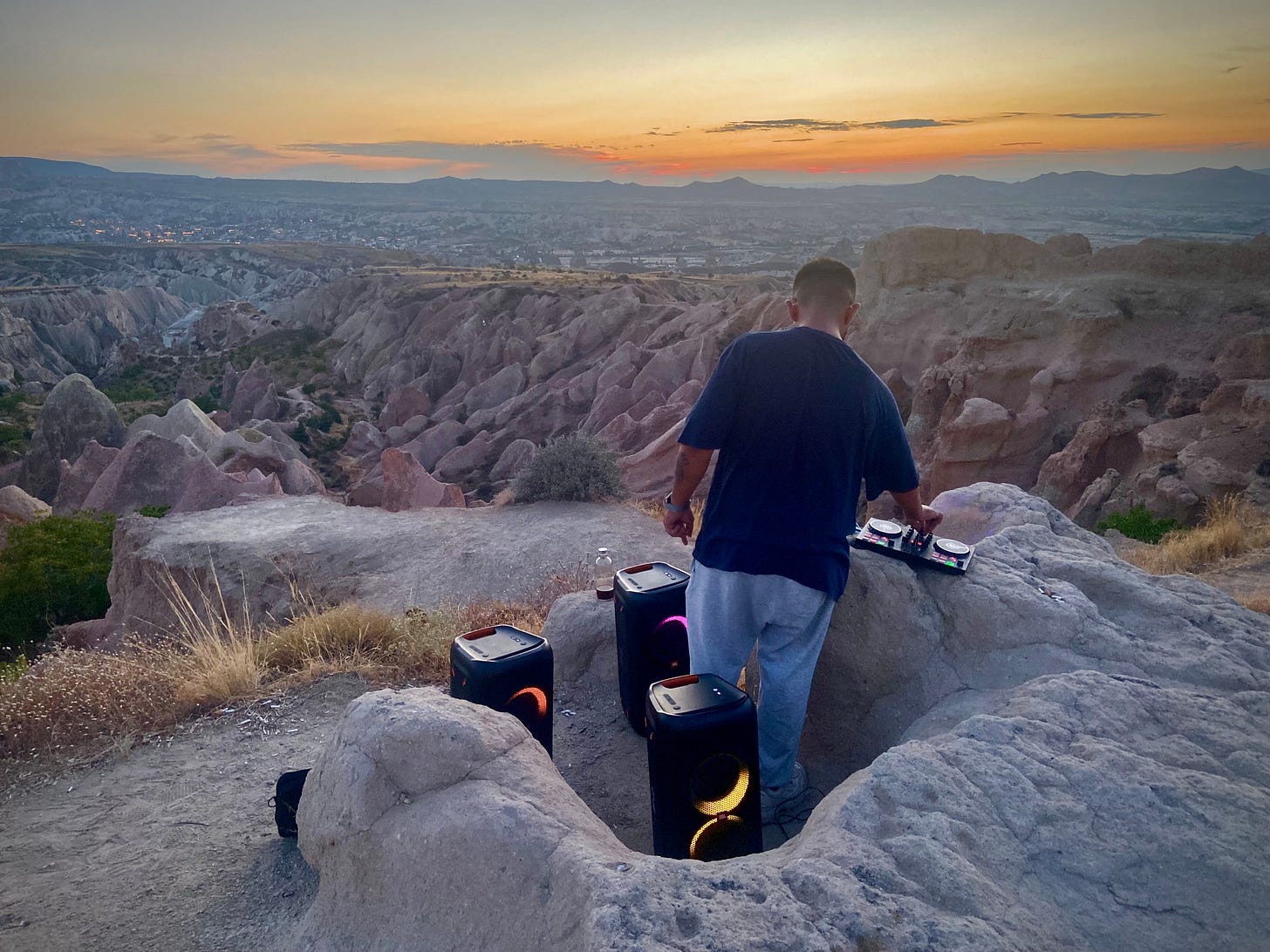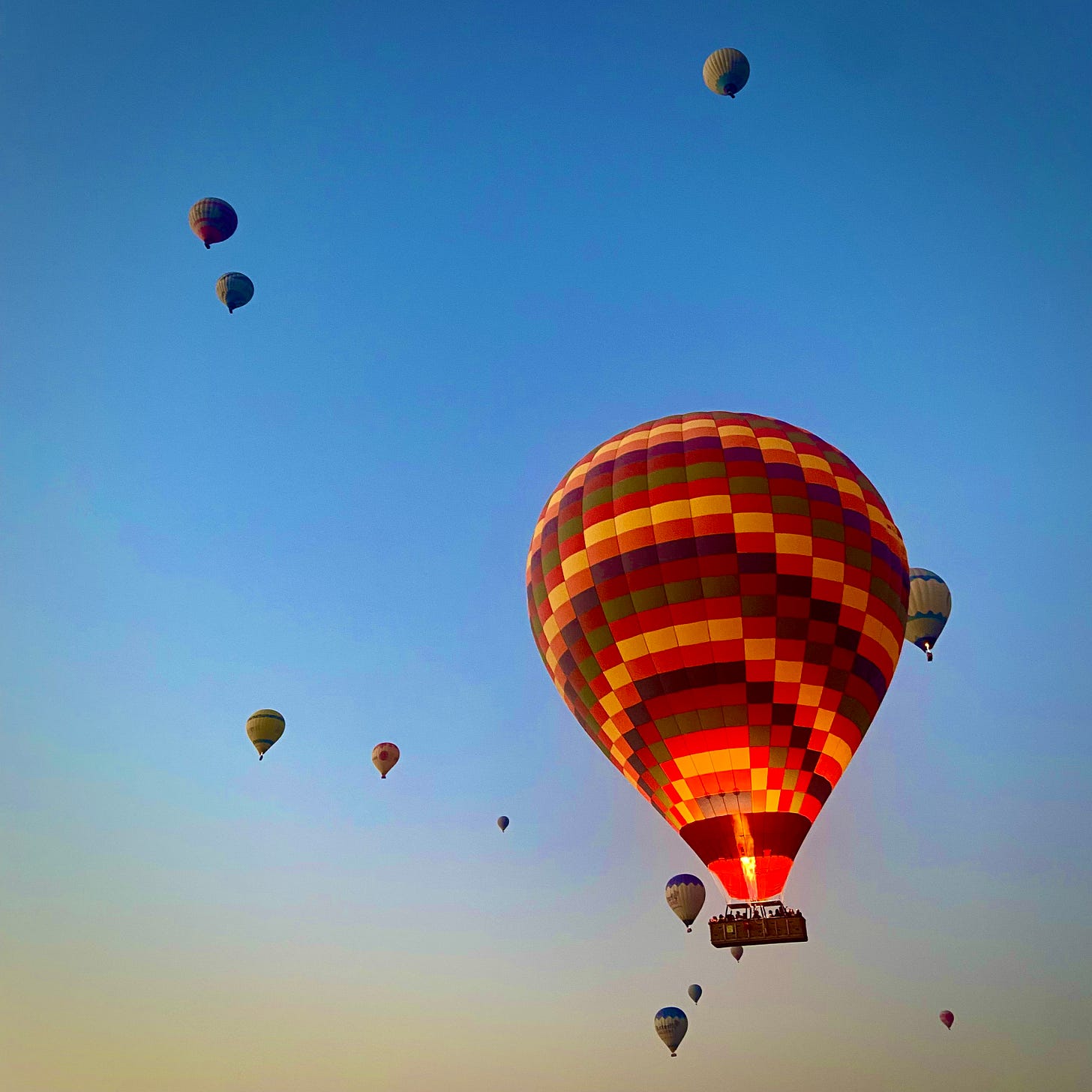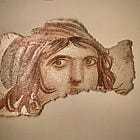Cappadocia: The Underground Church
Exploring a fascinating region in central Turkey known for an extensive underground network of tunnels, chambers and entire cities dug deep into bedrock.
The 21-year-old bus attendant in Antalya asked me if I smoked weed.
Not only did I smoke bud almost everyday for more than two decades, I actually created marijuana paraphernalia that won first place in the High Times Cannabis Cup on seven different occasions!
He reached up to give me a high five as I finished my story. “That all changed when God showed up and changed me on the inside. I haven’t smoked weed since.”
His excitement dwindled as he told me he didn’t believe in God.
And so, for the next thirty minutes, while we waited for my night bus to Cappadocia to arrive, I shared with him—mostly over a translator app—exactly what I believe and why I believe it. It was one of those special moments when I just kept speaking, because I knew the Lord was after his soul, and I was simply the vessel being used to speak directly to this young man’s spirit, calling him to Life. As I spoke, I was given intimate details about his past and future.
As I stepped away from the ticket counter, his eyes were twinkling. In choppy English he said, “You are God.” Even though my bus was now waiting on me, I took a few extra moments to clarify.
“I hear from God—because I have a relationship with Him—but I am not God.”
He smiled, and I boarded a seven-hour night bus from Antalya to Göreme.
As the charter bus pulled into our final destination, the sun was rising over sharp, pointed rock formations. I knew I was in a special land.
The Korean mama I stayed with in Antalya had contacted another Korean connection who picked me up from the bus stop in a large white, top-heavy van. He drove fast around sharp corners carved through sun-kissed mountains as my wide eyes soaked in the morning sights.
Where were we going?
An Ancient Cave
All I was told is that I would be given free accommodation in a cave if I helped with their renovation project. I agreed to the terms before knowing that I would spend the next three days doing hard manual labor. This countryside villa that once housed a small church on the side of a mountain was now being renovated to serve as a Bible School for Afghan refugees.
For three days, four men worked tirelessly together: a Korean, an Afghan, an Iranian and me—an American. We built a security fence and retaining wall across the top ridge of the cliffside property and mixed a never-ending sludge of concrete as an Iranian refugee meticulously installed travertine tiles in the open-air courtyard.
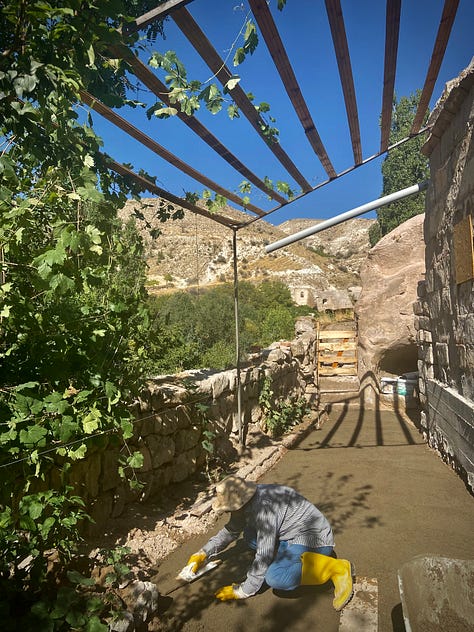
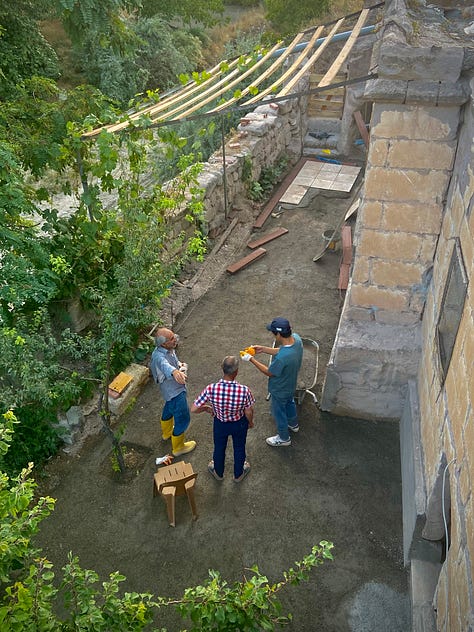
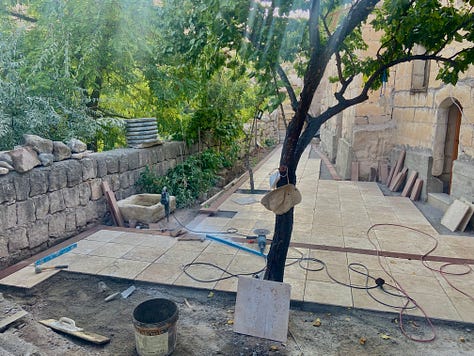
Amazingly, this entire region was dotted with churches in some of the most unusual places. During my short six-day stay in Cappadocia, I prayed in various cliffside caverns, danced in a hollow mountain spire and worshiped the Creator four stories below the earth’s surface.
All were once active churches.
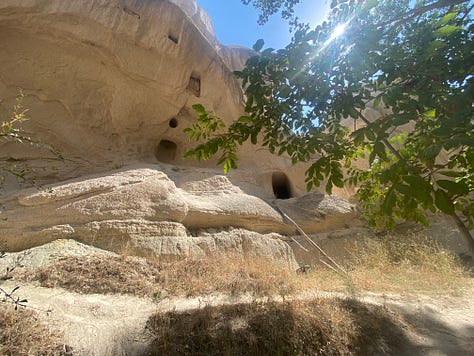
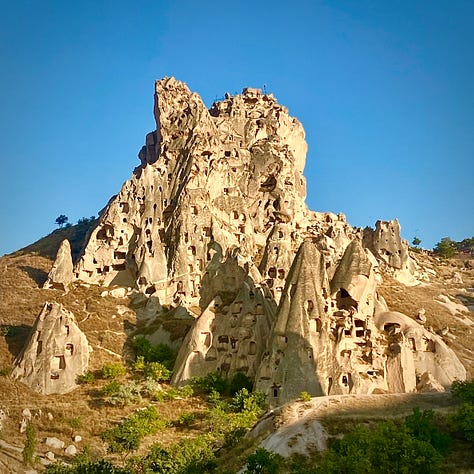
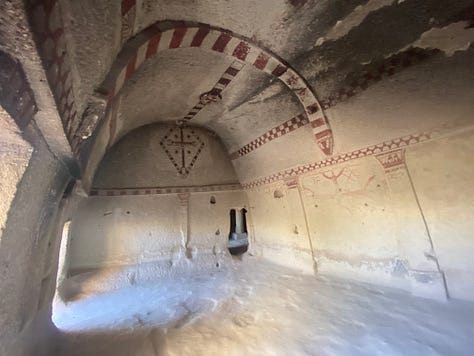
There are hundreds, if not thousands, of churches carved into the sides of cliffs in this region. Notably, each congregation made its own wine for communion. As such, the Cappadocia region is still known for its amazing wine.
New Wine
It was late August, and grapes hung ripe on the vine.
This was made evident when my new Afghan friend and I took a wrong turn on a sunrise jaunt through the mountainside. We found ourselves strolling through a vineyard in a gulley between two sharp cliffs with dwellings carved into each side.
As we wandered through the sun-dappled vineyard, we plucked grapes, apples and figs. We filled our bellies with fruit until we could eat no more. In the distance, an old Turkish man was also collecting grapes in large wicker baskets which he hoisted over his back and hauled to a central collection point.
We helped him load a few baskets onto his tractor, and he gifted us more grapes.
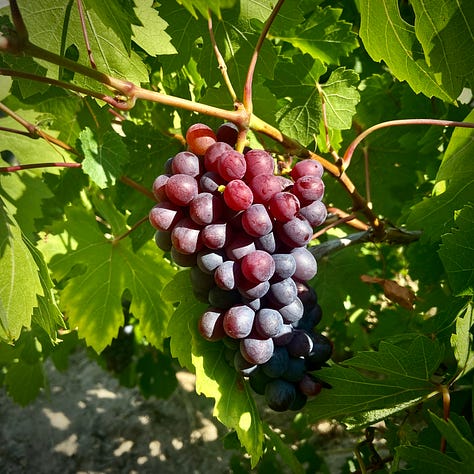
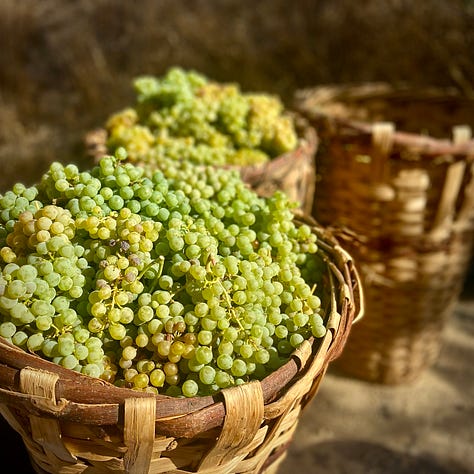
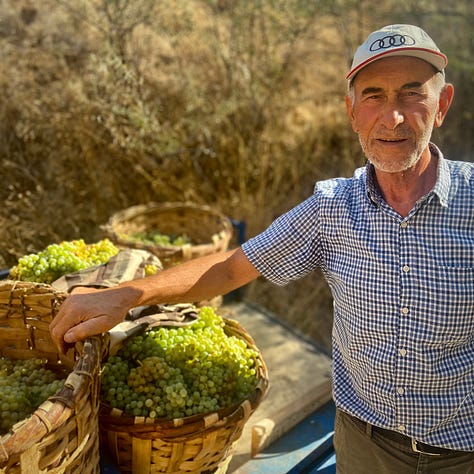
While we were enjoying a grape breakfast on our leisurely sunrise stroll, the Iranian and Korean were busy back at the villa digging. We returned to an incredible discovery. One of the flat stones edging the small tomato garden needed to be removed to make way for the new tile flooring. Moving it was no small feat. What appeared to be a small flat stone on the surface turned into an incredible surprise, as two-thirds of it was buried.
Long ago, the wine press this church used for stomping grapes was tipped up on its side near the wall and left abandoned. Over the years, dirt filled in around it leaving only the top edge exposed. Finding an ancient artifact of this magnitude brought great joy and sparked wonder.
We joked about stomping grapes and making our own new wine. Secretly, I craved this not to be a joke. And, while fresh grapes were delivered almost daily from generous neighbors with bumper crops this year, we never took to smashing any of them.
Regardless, I couldn’t help but wonder how wine from this church would have tasted?
The following morning, half of our quartet—the pastors—left early, returning to Antakya for their Sunday service.
Shabbat Shalom from Cappadocia
I ensured we had local wine and bread to accompany the kebab feast my Iranian friend was roasting above red-hot coals. I led Hebrew prayers over our Shabbat dinner; he prayed in Persian.
I wondered to myself how many Shabbat dinners were enjoyed in this cave-side dwelling. After all, the church in this region existed during the first century, well before Constantine changed the important day for Christians to SUNday.
Side Note: If you’re a Christian interested in getting back to the Hebrew heritage of your faith, this is an excellent resource that I helped put together.
Sunday Service
We woke up early Sunday morning.
I’d spent the previous evening texting back and forth over WhatsApp with a leader of the Iranian church. Actually, I wasn’t texting. Rather, I was playing her voice messages aloud and having my friend reply with audio.
Before the interaction started, I was told the church was not meeting this Sunday. After several back and forth messages, she invited me to a regional gathering with six Iranian churches from neighboring towns.
I assume she thought I spoke Persian. To be clear, I do not; my friend does.
When we walked into the back room on a top floor of an otherwise abandoned building in downtown Nevşehir, it became clear that I was the odd man out. I understood nothing, but was able to follow along by looking up the scriptures shared on the overhead projector.
As several different men spoke, I sketched a rough drawing of the dream I experienced that morning. It seemed to be a word for the Iranian church, so over lunch I asked the lead pastor if I could share. Never have I been met with such hospitality. The entire room grew quiet as they brought me to the front. I shared in English as they translated into Persian.
They then asked if they could pray over me, and a deposit was made in my spirit that I do not fully comprehend.
There have been a few pivotal moments in my life when I’ve gotten uncontrollable chin shakes in the presence of prophets. The first came the afternoon I met Steve Cioccolanti. The most notable shaking came when I was glued to a chair for half an hour after Dean Briggs spoke. It’s also happened with Brian Francis Hume, June Cryner and various others. Over the last few years I’ve come to recognize this manifestation of Ruach (Spirit) and the shaking in Nevşehir seemed to be just as significant—if not more so.
The entire Church gathered around, formed a “fire tunnel” and asked me to walk through. I barely managed alongside my friend who helped prop me up as I received blessings from one of the most persecuted Churches on Earth.
The Persecuted Church
Few places on earth have preserved the story of the persecuted Church like the region of Cappadocia. In the first century, Jerusalem was ransacked and Jews were dispersed once again around the world. A large group that knew Yeshua (Jesus) as their Messiah traveled north until they arrived in a land that was clearly blessed by God.
Stunning landscapes, fertile land and stone that could easily be carved into impenetrable underground fortresses.
The people group who settled in Cappadocia is known today for their extensive Church network formed underground—literally—in this region. Walk through any of these “churches” however and you’ll see a stunning similarities to synagogues. Why?
This people group knew what it meant to be persecuted. They knew what it meant to have entire towns wiped out. The looming threat is made clear in the incredible architecture.
Entire cities exist underground. The largest I entered was said to be able to house 20,000 people! Incredible!
As you enter the underground entrance there are typically a series of safe rooms where a large stone can be rolled across the pathway to block anyone from entering or exiting. One man can roll the stone shut, yet it would take multiple men to roll it back up the small hill to re-open the passageway.
Due to the engineering, the stone can only be rolled open or shut from the inside.
Ever heard the Biblical story of the stone that was rolled away? As I walked through this ancient Church, I couldn’t help but wonder if it looked anything like this?
And they were saying to one another, “Who will roll away the stone for us from the entrance of the tomb?” And looking up, they saw that the stone had been rolled back—it was very large.
Mark 16:3-4
Words Cannot Capture Cappadocia
All in all, this region of Turkey will remain one of my favorites. Sure, there are areas that are overly touristy, but for good reason. There are few places on earth with such magical landscapes and vibrant history.
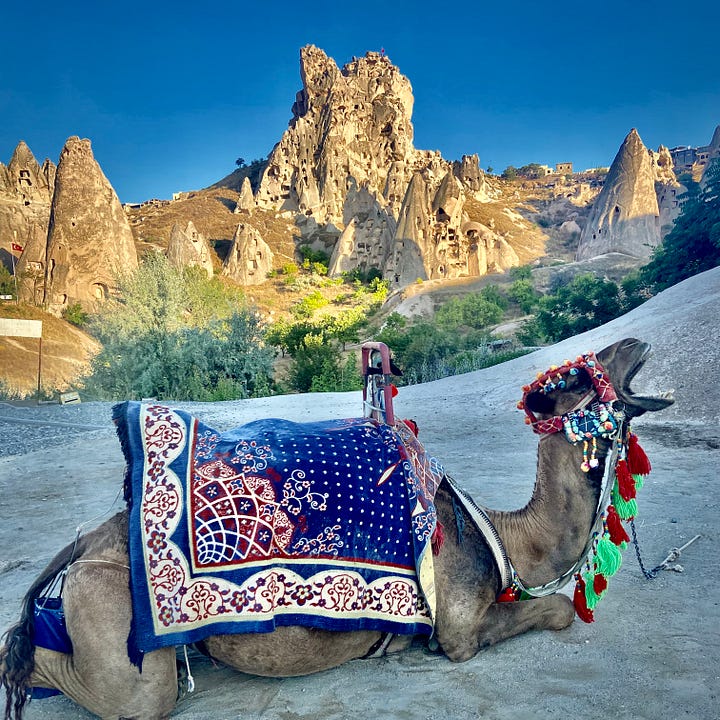
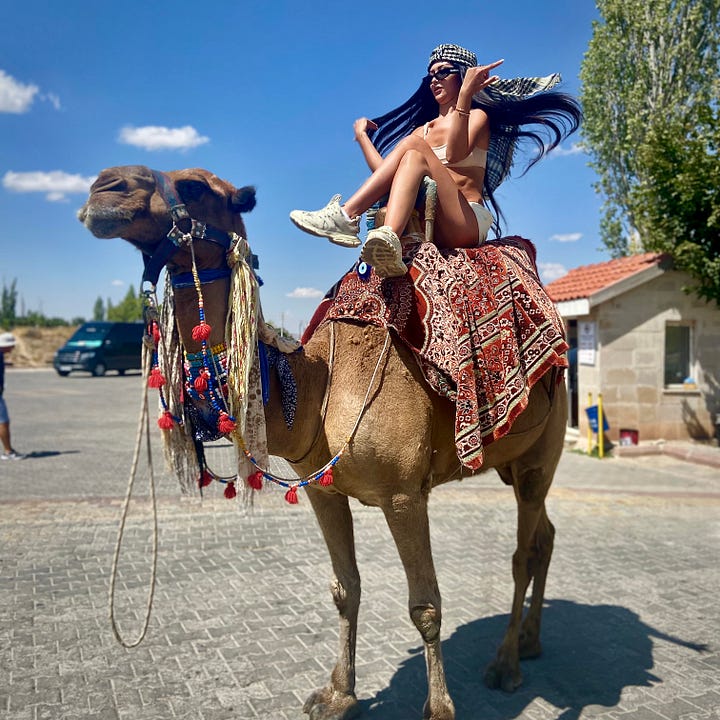
Each day seemed to build upon the previous. Each sunset more spectacular and each sunrise beyond breathtaking. There’s something surreal about this region.
One morning I even watched the sun rise from a hot air ballon for the first time in my life. Compared to the rest of the adventures in Cappadocia, however, this adventure was hardly the highlight.
I’m Gr8ful.



